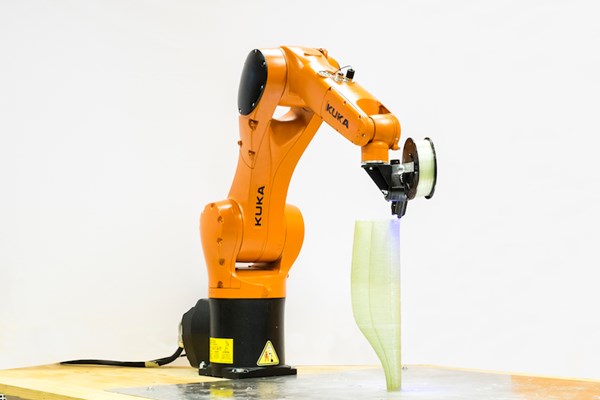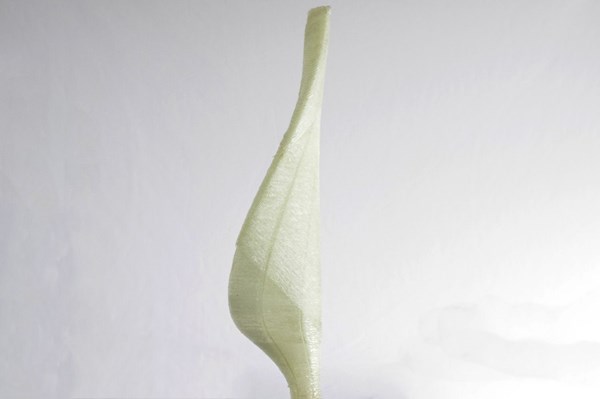Video: Six-axis robotic arm 3D printing glass fiber composites
Atropos is a new six-axis robotic arm that was developed in collaboration with KUKA and Owens Corning.

Additive manufacturing of continuous fiber composites. (Photo credit: Politecnico di Milano university).
Engineers from +LAB, the 3D printing laboratory of the Politecnico di Milano university in Italy, are looking to redefine composite manufacturing with utilizing 3D printing technology. The research project on continuous fiber composite materials and thermosetting resin is called Atropos, which uses a robotic arm, to 3D-print composites. Atropos is a new six-axis robotic arm that was developed in collaboration with KUKA, for the robotic arm, and Owens Corning, for the glass fiber. The technology was recently recognized as a winner of the JEC Innovation Award in the category of 3D printing.
According to a news release from +Lab, inspired by nature and silkworms, and controlled by the artifact intelligence of special algorithms, Atropos fluently moves in space depositing a continuous fiber of thermosetting composite material, instantly cured as it comes out of his head.
“The possibilities of movements allowed by the robot, while maintaining the head free of excessive mechanisms, has been one of the key factors to succeed in this additive manufacturing process,” the group stated. “The number of axis allows for movements otherwise impossible, making feasible to deposit the fibers in the direction of stresses, optimizing the performance and the material consumption.”

Glass fiber 3D-printed structure. (Photo credit: Politecnico di Milano university)
Currently the group is using fibers made of glass and basalt (supplied by Owens Corning and GS4C), embedded in an acrylic photocurable resin. They are also working to expand the usable materials: “in particular we want to process fibers made of carbon and polyaramides but also natural fibers such as bamboo. We are also investigating epoxy resins as possible matrices for the composites,” the group stated.
The objects produced by this process do not need any mold. The group states that the item can then be subject to further processes, such as lay-ups, or left as it is, ready to be completed with final additions.
Check out this impressive video of Atropos in action:















